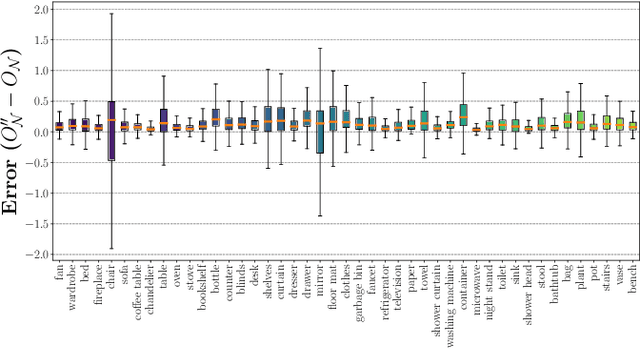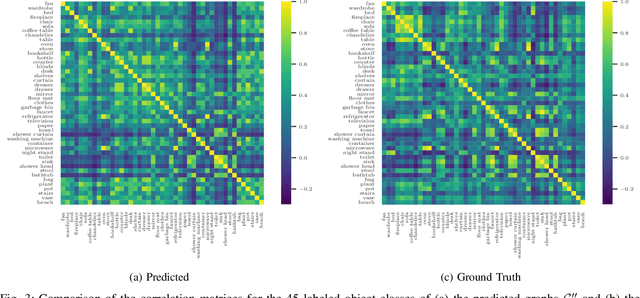Belief Scene Graphs: Expanding Partial Scenes with Objects through Computation of Expectation
Paper and Code
Feb 06, 2024



In this article, we propose the novel concept of Belief Scene Graphs, which are utility-driven extensions of partial 3D scene graphs, that enable efficient high-level task planning with partial information. We propose a graph-based learning methodology for the computation of belief (also referred to as expectation) on any given 3D scene graph, which is then used to strategically add new nodes (referred to as blind nodes) that are relevant for a robotic mission. We propose the method of Computation of Expectation based on Correlation Information (CECI), to reasonably approximate real Belief/Expectation, by learning histograms from available training data. A novel Graph Convolutional Neural Network (GCN) model is developed, to learn CECI from a repository of 3D scene graphs. As no database of 3D scene graphs exists for the training of the novel CECI model, we present a novel methodology for generating a 3D scene graph dataset based on semantically annotated real-life 3D spaces. The generated dataset is then utilized to train the proposed CECI model and for extensive validation of the proposed method. We establish the novel concept of \textit{Belief Scene Graphs} (BSG), as a core component to integrate expectations into abstract representations. This new concept is an evolution of the classical 3D scene graph concept and aims to enable high-level reasoning for the task planning and optimization of a variety of robotics missions. The efficacy of the overall framework has been evaluated in an object search scenario, and has also been tested on a real-life experiment to emulate human common sense of unseen-objects.
 Add to Chrome
Add to Chrome Add to Firefox
Add to Firefox Add to Edge
Add to Edge